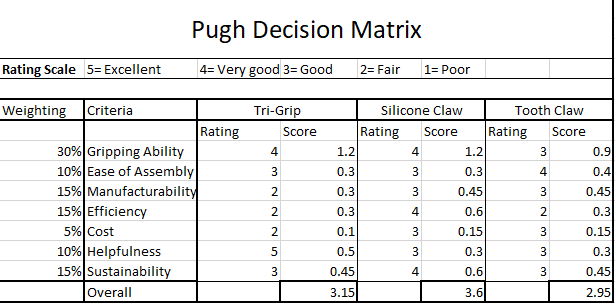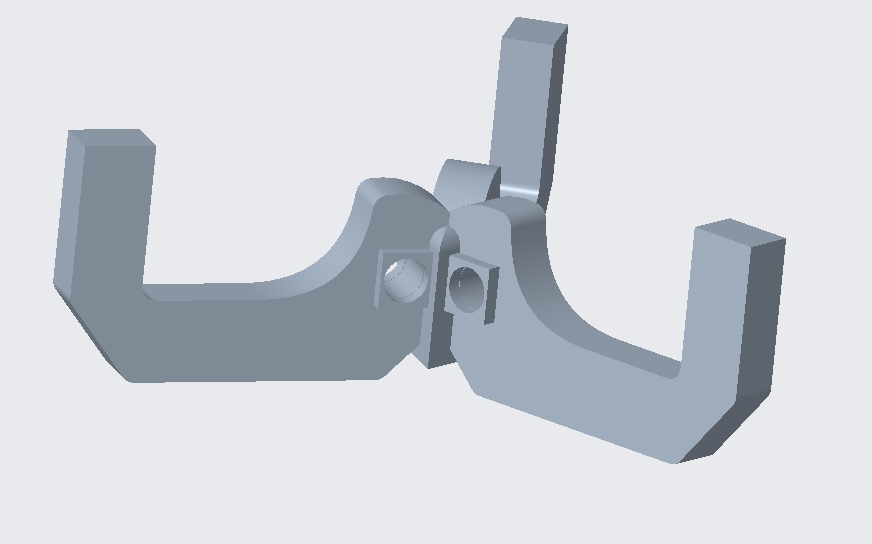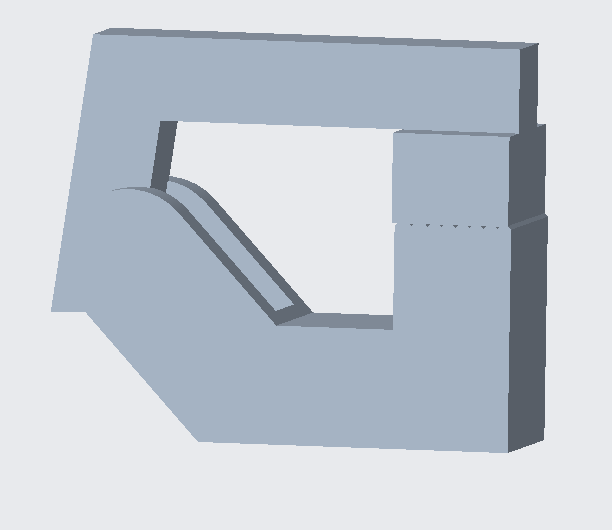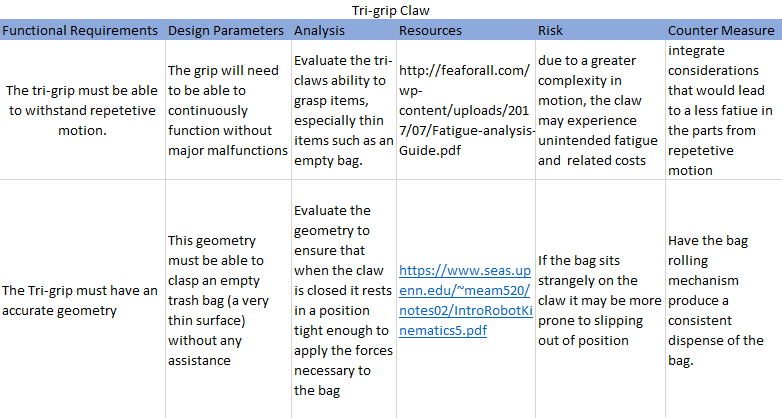My Assignments
Assignment #4: Modules
Updated Problem Statement:
The purpose of my design is to create a trash can that will replace the trash bag in the empty can automatically. This will make the process of taking the trash out shorter by eliminating the frustrating manual replacement of bags. We all know the feeling of wrestling with your trash can to get the bag on, getting rid of this problem would make the whole process much easier. One criterion that would set this trash can apart from others on the market is being able to use normal trash bags instead of specific bags made for it s specific application. It will require a method of delivering the bag to its proper location within the can. Within the three different strategies there were a number of ways to achieve this. Most plausibly with the use of a claw mechanism that will grab the bag and drag it to the desired location. It will also need a method of sealing the full bag when it is ready to be replaced, and removing air from between the bag and the can itself. It will also need to be able to apply sufficient force to the bag to fully fill the can with it.
Assumptions/Specifications
What we can assume about the problem is that the people who are interested in purchasing this product are willing to pay the extra price to eliminate this tedious task from their routine. Knowing this we can apply more resources and broader implications of design to better fix the problem. The ability for consumers to willingly pay the extra price will result in a better product and a more useful commodity.
The above link is the Gantt Chart for this project. This will be continually updated as the semester progresses and I get more knowledge of the future assignment details. Therefore, each assignment will be a slightly modified and more updated version of this gantt chart.
Pugh Decision Matrix (modules decision)

Through the decision matrix we are able to get a better idea of the best approach to our problem.From our matrix we are able to decide that the best solution module would be the silicone grip. Most notably influencing the sustainability and efficiency categories.
Module 1: The Tri-grip

Module 2: The Tooth Grip

Module 3: Silicon Grip
FRDPARRC Tables (Module 1-3)


Lessons Learned
- With this project I learned that procrastination of design is still something that will significantly hinder the quality of your product. It is better to plan ahead and give enough time to think through your problems before tackling them.
- I learned that I love conceptually thinking about solutions, but can understand the large magnitude of determination it requires to put a product into the world.
- Learned how to better organize myself through Gantt Charts.
- Learned how to think broadly about what kind of logistics go into design.
- Learned how to effectively brainstorm multiple problem solutions at once.
- Learned that FRDPARRC Tables stink and require a lot of consideration.
- I learned that there is A LOT of planning that is required for tackling even the easiest of product production.
- Learned how to make a FRDPARRC table that assists in organizing and comparing multiple strategies at once.
Comments for Jazmin Ramos
- I like that you incorporated the wheel into your design!
- Your Gantt Chartt and Decision Matrix look very thorough.
- I don't see a picture for your second module, maybe recheck your import link.